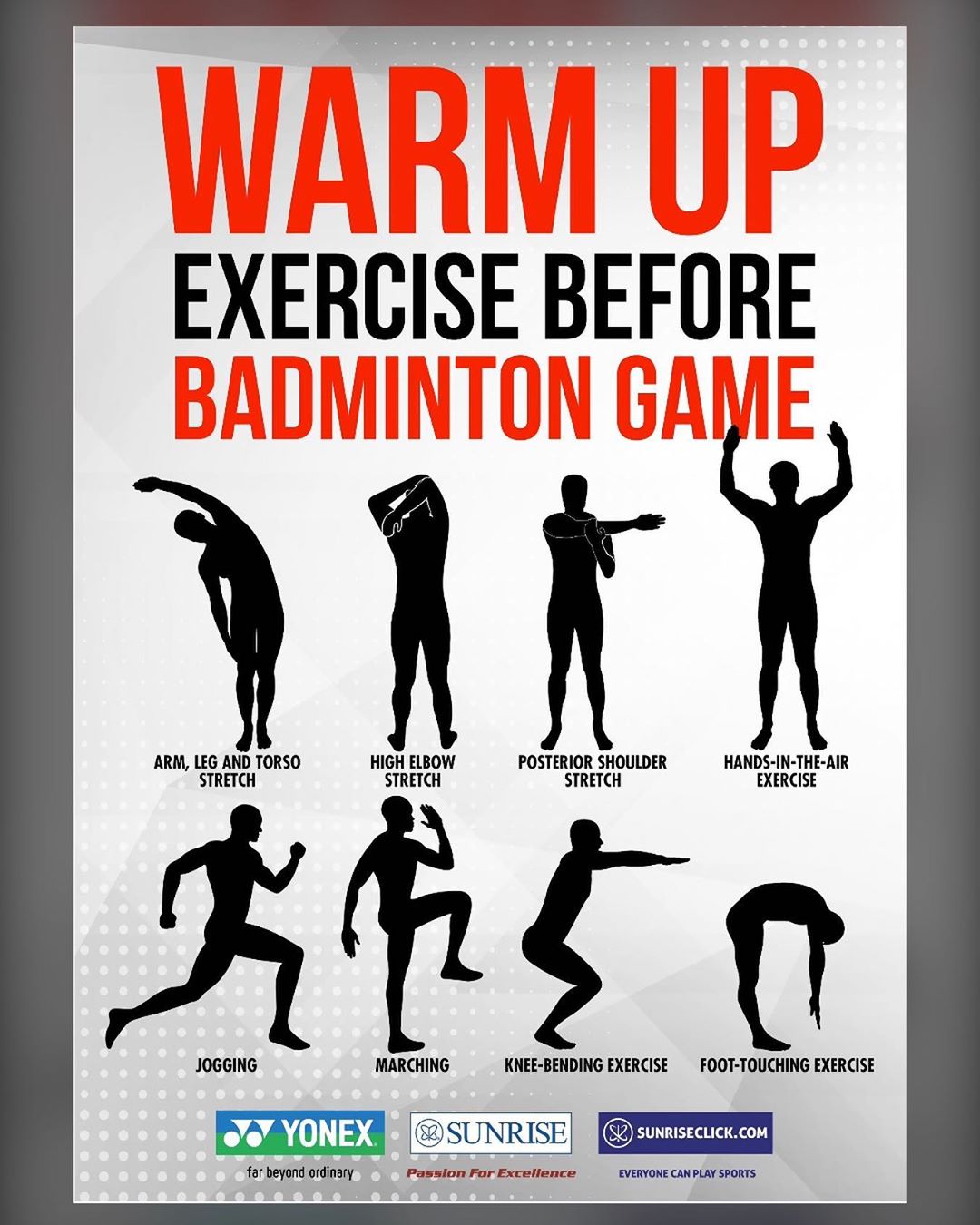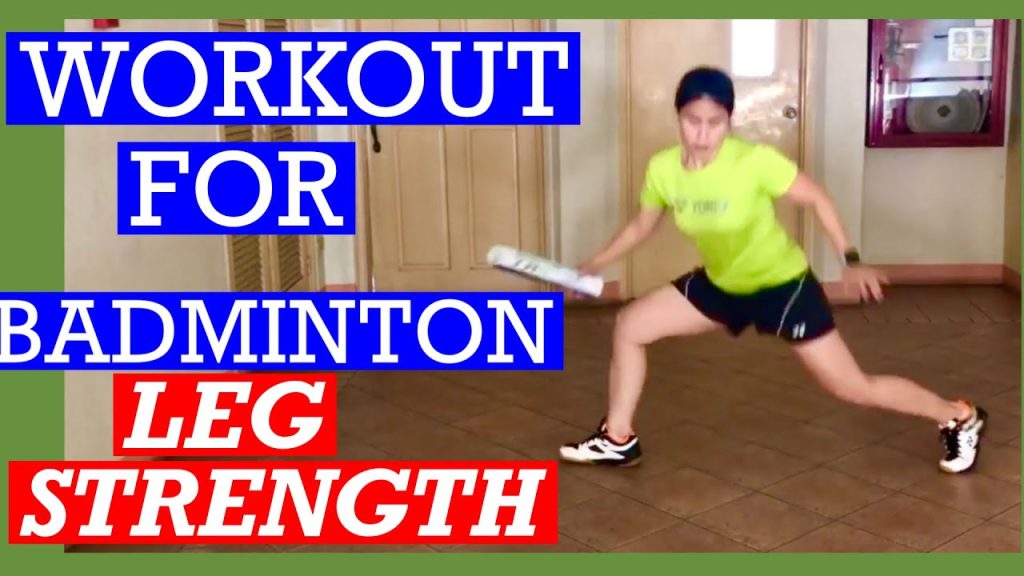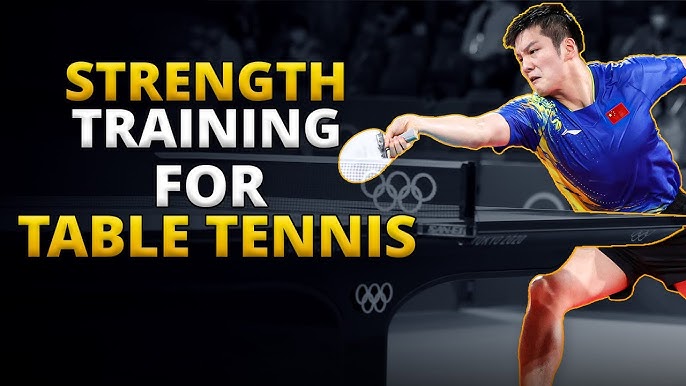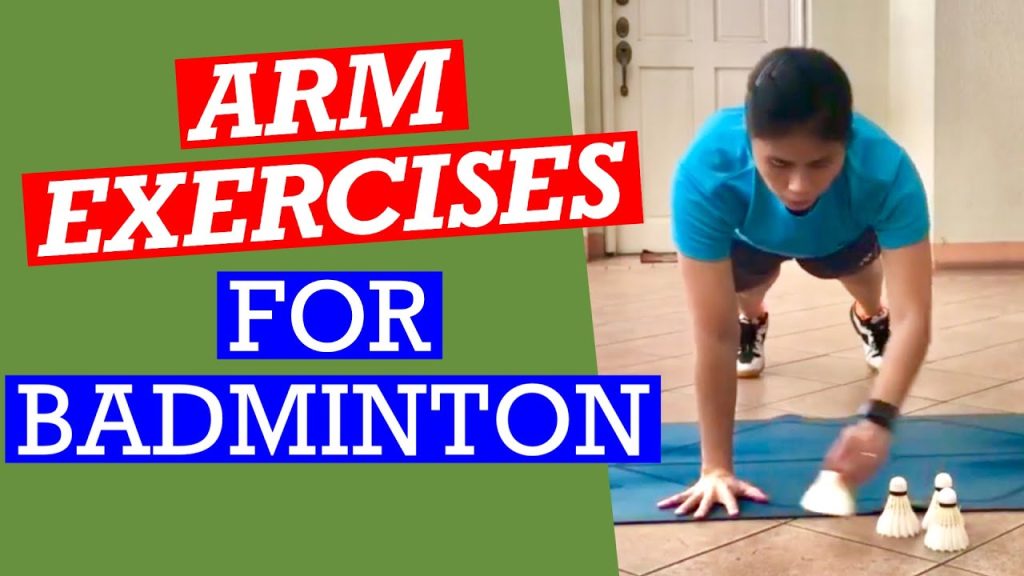Badminton demands quick movements and strong legs. Proper leg strength training can improve your game.
Badminton players rely heavily on leg strength for agility and power. Strong legs help in fast sprints, quick direction changes, and powerful jumps. This training not only enhances performance but also reduces injury risk. Effective leg exercises can give you the stability needed for swift movements on the court.
By focusing on specific drills, you can build endurance and explosive power. The right training routine can make a significant difference. Get ready to learn how to boost your badminton skills with targeted leg workouts. Let’s dive into the world of leg strength training for badminton and see how it can elevate your game.
Importance Of Leg Strength In Badminton
Badminton is a fast-paced sport that requires quick movements. Strong legs are crucial for excelling in badminton. They help players move swiftly and maintain balance during the game. This blog post explores why leg strength is important in badminton.
Enhanced Agility
Agility is key in badminton. Players need to change directions quickly. Strong legs support quick lateral movements. They help in fast sprints and sudden stops. This agility allows players to reach the shuttlecock faster. It can make the difference between winning and losing a point.
Improved Stamina
Badminton matches can be long and intense. Strong legs help in maintaining stamina. They support sustained high energy levels. This is important during long rallies and matches. Improved leg strength can reduce fatigue. It helps players stay active and focused throughout the game.
Here is a table of leg exercises that can improve agility and stamina:
| Exercise | Benefit |
|---|---|
| Squats | Builds overall leg strength |
| Lunges | Improves balance and coordination |
| Calf Raises | Enhances calf muscle strength |
| Jump Rope | Boosts agility and stamina |
Incorporating these exercises into your routine can be beneficial. Strong legs can enhance your badminton performance. They can help you stay agile and maintain stamina. This will give you an edge over your opponents.

Credit: www.youtube.com
Key Muscles For Badminton Players
Badminton is a fast-paced sport that demands agility, speed, and strength. To excel, players must focus on training key muscles. Proper muscle development boosts performance and prevents injuries. Let’s explore the essential muscles for badminton players.
Quadriceps
The quadriceps, located at the front of the thigh, play a vital role in badminton. They help in jumping, lunging, and quick movements. Strong quadriceps enhance your ability to move swiftly around the court.
- Leg extensions
- Squats
- Lunges
Calves
Calves are crucial for explosive movements. They allow players to jump higher and move quickly. Strengthening the calves can lead to better agility and faster reflexes on the court.
- Calf raises
- Jump rope
- Box jumps
Hamstrings
The hamstrings, located at the back of the thigh, balance the strength of the quadriceps. They aid in running, stopping, and changing direction. Strong hamstrings reduce the risk of injuries and improve overall leg power.
- Leg curls
- Deadlifts
- Glute bridges
Glutes
The glutes are essential for stability and power. They support quick lateral movements and jumps. Developing strong glutes can enhance your overall performance on the badminton court.
- Hip thrusts
- Step-ups
- Squats
Focusing on these key muscles will help improve your badminton game. Consistent training can lead to better performance and fewer injuries.
Warm-up Exercises
Before diving into intense badminton leg strength training, warm-up exercises are crucial. They prepare your muscles, reduce injury risk, and enhance performance. Effective warm-up exercises include dynamic stretching and light jogging.
Dynamic Stretching
Dynamic stretching is vital for badminton players. It involves moving parts of your body, gradually increasing reach and speed. This helps improve flexibility and range of motion.
Start with leg swings. Stand on one leg, swing the other forward and backward. Perform 10-15 swings per leg. Next, do high knees. Jog in place, bringing your knees up to your chest. Do this for about a minute.
Incorporate lunges. Step forward with one leg, lowering your hips until both knees are bent. Alternate legs for 10-15 reps. Finally, try arm circles. Extend your arms and make small circles. Gradually increase the size of the circles for 30 seconds.
Light Jogging
Light jogging is an excellent warm-up exercise. It increases your heart rate and blood flow to your muscles. Start with a slow pace for about 5 minutes. Gradually increase your speed.
Jogging also helps loosen your leg muscles. It prepares them for more intense movements. Make sure to maintain a steady pace. Avoid sprinting during the warm-up phase.
Combine light jogging with dynamic stretching for a complete warm-up. This ensures your legs are ready for badminton leg strength training. Your muscles will be warm, flexible, and prepared for action.
.gif)
Credit: www.victorsport.com
Plyometric Drills
Plyometric drills boost leg strength essential for badminton. Exercises like jump squats and box jumps enhance agility and power. These workouts also improve quick movements on the court.
Plyometric drills are essential for improving leg strength in badminton. These exercises boost your explosive power and enhance your agility on the court. They help you react quickly, making it easier to move and change direction. Two effective plyometric drills are box jumps and lateral bounds.Box Jumps
Box jumps are a great way to build leg strength. Start by standing in front of a sturdy box or platform. Bend your knees and swing your arms back. Jump onto the box, landing softly with both feet. Step down and repeat. This drill improves your vertical leap and strengthens your calves, quads, and glutes.Lateral Bounds
Lateral bounds enhance your side-to-side movement. Stand with your feet shoulder-width apart. Push off your right foot and jump to the left. Land on your left foot, keeping your balance. Repeat by jumping back to the right. This exercise strengthens your legs and improves your lateral agility, crucial for badminton footwork. “`Strength Training Exercises
Strength training exercises are crucial for badminton players. They help build leg strength, which is essential for quick movements on the court. Strong legs improve agility, balance, and endurance. This section will cover three effective exercises: squats, lunges, and leg press.
Squats
Squats are a fundamental exercise for leg strength. They target the quads, hamstrings, and glutes. To perform a squat, stand with your feet shoulder-width apart. Lower your body by bending your knees and hips. Keep your back straight and chest up. Push through your heels to return to the starting position. Repeat for several reps.
Lunges
Lunges work the quads, hamstrings, and glutes. They also improve balance. Start by standing tall. Take a step forward with one leg. Lower your body until both knees are bent at 90 degrees. Push off your front foot to return to the starting position. Switch legs and repeat. Perform multiple reps for each leg.
Leg Press
The leg press machine targets the quads, hamstrings, and glutes. Sit on the machine with your back against the pad. Place your feet shoulder-width apart on the platform. Push the platform away by extending your legs. Slowly return to the starting position. Keep your feet flat and knees in line with your toes. Repeat for several reps.
Balance And Stability Workouts
Strong legs are crucial for badminton players. Balance and stability workouts help improve performance and reduce injury risks. These exercises focus on strengthening leg muscles and enhancing body control. Here are two effective workouts you should include in your training routine.
Single-leg Deadlifts
Single-leg deadlifts are great for building strength and stability. They target your hamstrings, glutes, and lower back. Follow these steps:
- Stand on one leg, keep your knee slightly bent.
- Hold a dumbbell in the opposite hand.
- Bend at your hips, lowering the weight toward the floor.
- Keep your back straight and your core engaged.
- Return to the starting position and repeat.
Perform 3 sets of 10 reps on each leg. This exercise improves balance and strengthens your legs.
Balance Board Exercises
Using a balance board can greatly enhance your stability. These exercises engage your core and lower body muscles. Here are a few balance board exercises to try:
- Standing Balance: Stand on the board with both feet. Try to keep the board steady for 1 minute. This improves core strength and leg stability.
- Single-Leg Balance: Stand on one leg on the board. Hold for 30 seconds, then switch legs. This exercise increases balance and leg strength.
- Squats: Perform squats on the balance board. Keep your back straight and go as low as you can. This targets your quads and glutes, improving leg power and stability.
Incorporate these balance and stability workouts into your training routine. They are essential for enhancing your badminton performance and preventing injuries.
Cool Down And Stretching
After an intense badminton leg strength workout, cooling down is essential. It helps your muscles recover and reduces soreness. Stretching can improve flexibility and prevent injuries. Here are some effective cool down techniques.
Static Stretching
Static stretching involves holding a stretch for a period. It helps lengthen muscles and improves flexibility. Focus on your legs, especially the calves, quads, and hamstrings.
For calf stretches, stand near a wall. Place one foot behind you and press your heel down. Hold for 20-30 seconds. Switch legs and repeat.
For quad stretches, stand on one leg. Grab your other ankle and pull it towards your buttocks. Keep your knees together. Hold for 20-30 seconds. Switch legs and repeat.
For hamstring stretches, sit on the ground. Extend one leg and bend the other. Reach towards your toes and hold for 20-30 seconds. Switch legs and repeat.
Foam Rolling
Foam rolling is a self-massage technique. It helps release muscle tightness and improves blood flow. Use a foam roller on your legs, focusing on sore areas.
Start with your calves. Sit on the ground and place the roller under your calves. Roll back and forth slowly. Focus on tender spots.
Next, move to your quads. Lie face down and place the roller under your thighs. Roll up and down slowly. Apply pressure on tight areas.
Finish with your hamstrings. Sit on the ground and place the roller under your thighs. Roll back and forth slowly. Spend extra time on sore spots.
Nutrition For Muscle Recovery
Proper nutrition is crucial for muscle recovery after intense badminton leg strength training. Your body needs the right nutrients to repair and rebuild muscle tissue. Let’s focus on two key aspects: protein intake and hydration.
Protein Intake
Protein plays a vital role in muscle recovery. It helps repair damaged muscle fibers and promotes muscle growth. Aim to consume a high-protein meal within an hour after your training session.
Sources of protein include:
- Chicken breast
- Fish
- Eggs
- Beans
- Greek yogurt
Consider including a protein shake if you struggle to get enough protein from whole foods. For vegetarians, options like tofu and lentils are excellent sources.
Here’s a simple table showing protein content in common foods:
| Food | Protein (grams) |
|---|---|
| Chicken breast (100g) | 31g |
| Fish (100g) | 22g |
| Egg (1 large) | 6g |
| Beans (1 cup) | 15g |
| Greek yogurt (170g) | 10g |
Hydration
Hydration is essential for muscle recovery. Water helps transport nutrients to your muscles and flush out toxins. Dehydration can slow down the recovery process and increase muscle soreness.
Tips for staying hydrated:
- Drink water before, during, and after training.
- Carry a water bottle with you.
- Consume fruits and vegetables with high water content, like cucumbers and watermelon.
For an extra boost, consider electrolyte drinks. They help replenish minerals lost through sweat. Look for options with sodium, potassium, and magnesium.
Common Mistakes To Avoid
Badminton leg strength training is crucial for improving performance. Yet, many players make common mistakes that hinder their progress. Understanding these errors can prevent injury and boost effectiveness. Let’s dive into some of these mistakes.
Overtraining
Overtraining can lead to fatigue and injury. It’s a common mistake in leg strength training. Players often push too hard, thinking more is better. This can cause muscle strain or even long-term damage.
Here are some signs of overtraining:
- Persistent soreness
- Decreased performance
- Insomnia
- Constant fatigue
To avoid overtraining, follow a balanced workout schedule. Include both intense and light sessions. Listen to your body and adjust accordingly. Remember, quality is more important than quantity.
Ignoring Rest Days
Rest days are as vital as training days. Ignoring rest can slow down progress and increase injury risk. Muscles need time to recover and grow stronger.
Consider these benefits of rest days:
- Muscle repair
- Improved performance
- Reduced fatigue
- Injury prevention
A good rule is to schedule at least one rest day per week. Use this time for light activities or stretching. This helps maintain flexibility and overall wellness.
By avoiding these common mistakes, you can enhance your badminton leg strength training. Focus on balanced workouts and proper recovery. This ensures long-term success and a healthier body.

Credit: www.sportsuncle.com
Frequently Asked Questions
How Can I Strengthen My Legs For Badminton?
Incorporate exercises like squats, lunges, and calf raises into your routine. These exercises target key muscles used in badminton. Consistency is key for optimal results.
What Are The Best Leg Workouts For Badminton?
The best leg workouts for badminton include squats, lunges, and plyometric exercises. These enhance strength, stability, and explosive power, essential for swift movements on the court.
How Often Should I Train My Legs For Badminton?
Train your legs at least three times a week. Ensure you include rest days to allow muscle recovery. Consistent training leads to better performance.
Are Squats Good For Badminton Players?
Yes, squats are excellent for badminton players. They strengthen the quadriceps, hamstrings, and glutes, which are crucial for powerful movements and stability on the court.
Conclusion
Strength training for badminton legs is crucial. It improves agility and power. Consistent training leads to better performance on the court. Remember to include exercises like squats and lunges. Always warm up and cool down to prevent injuries. Stay dedicated to your routine.
Soon, you’ll notice significant improvements in your game. Strong legs make a big difference in badminton. So, start incorporating these tips today. You’ll see results with time and effort. Happy training!



